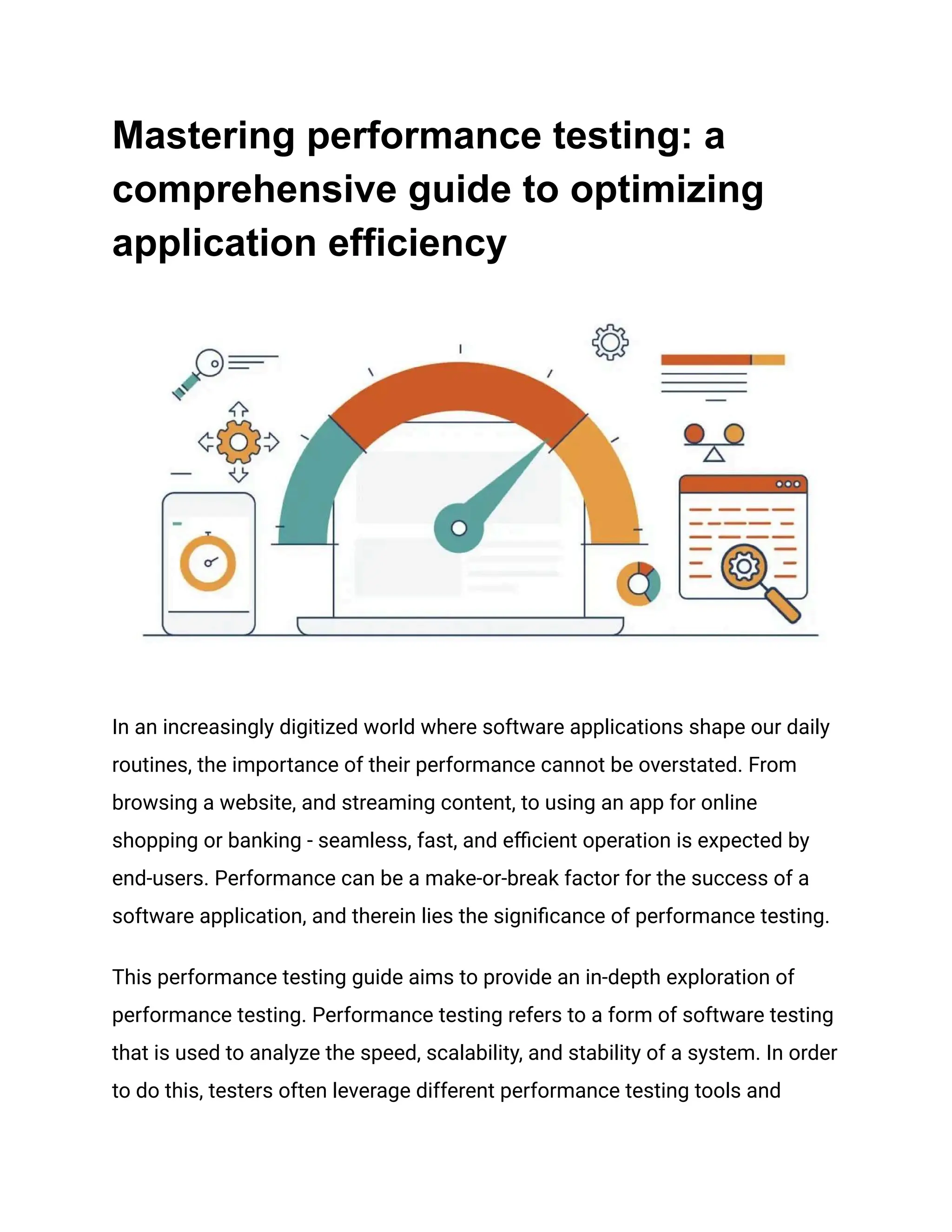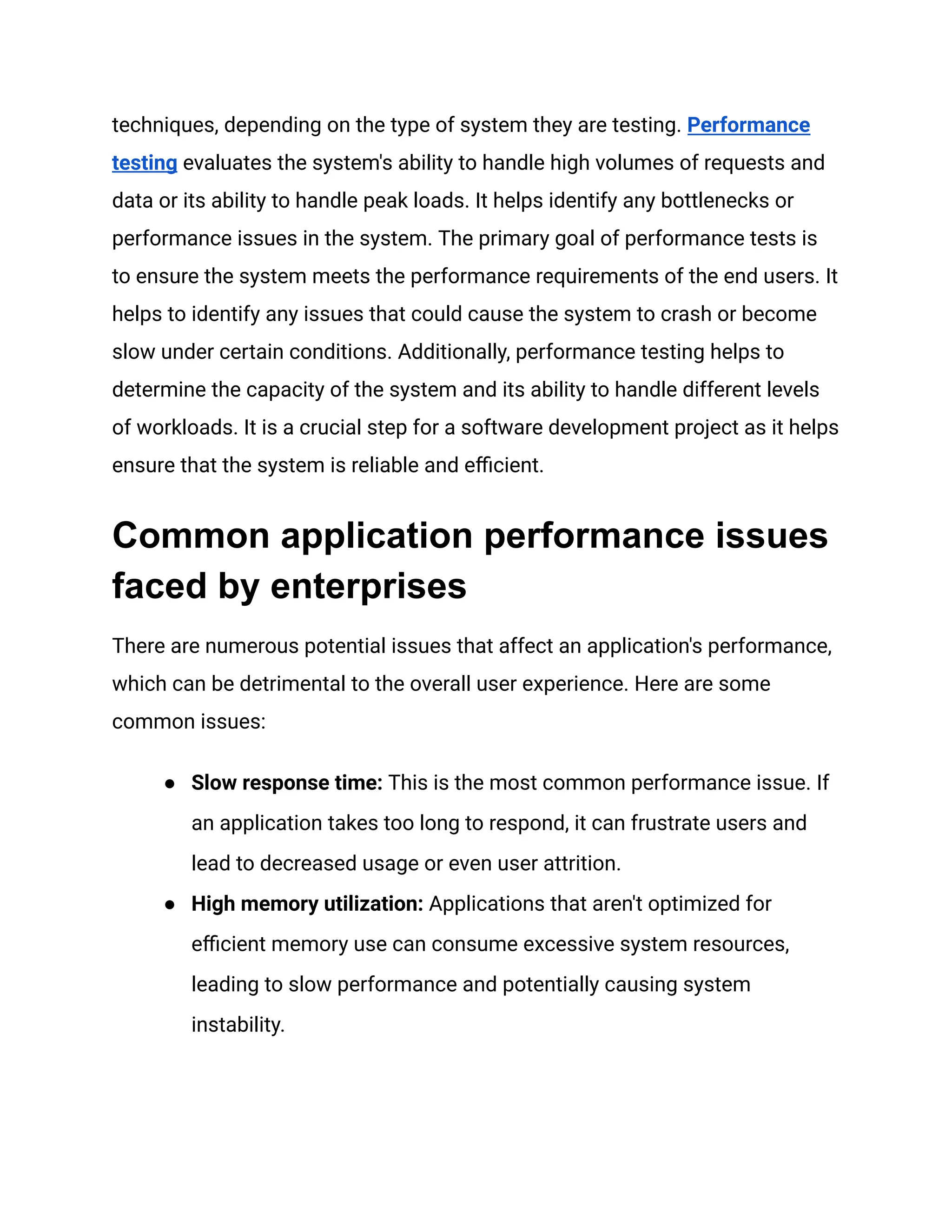The document is a comprehensive guide on performance testing, emphasizing its crucial role in ensuring software application efficiency, reliability, and user satisfaction. It discusses common performance issues, the significance of performance testing, various types of performance tests, and the challenges faced in testing. Additionally, it provides insights into the development of a robust performance testing strategy and the importance of metrics in measuring application performance.




















